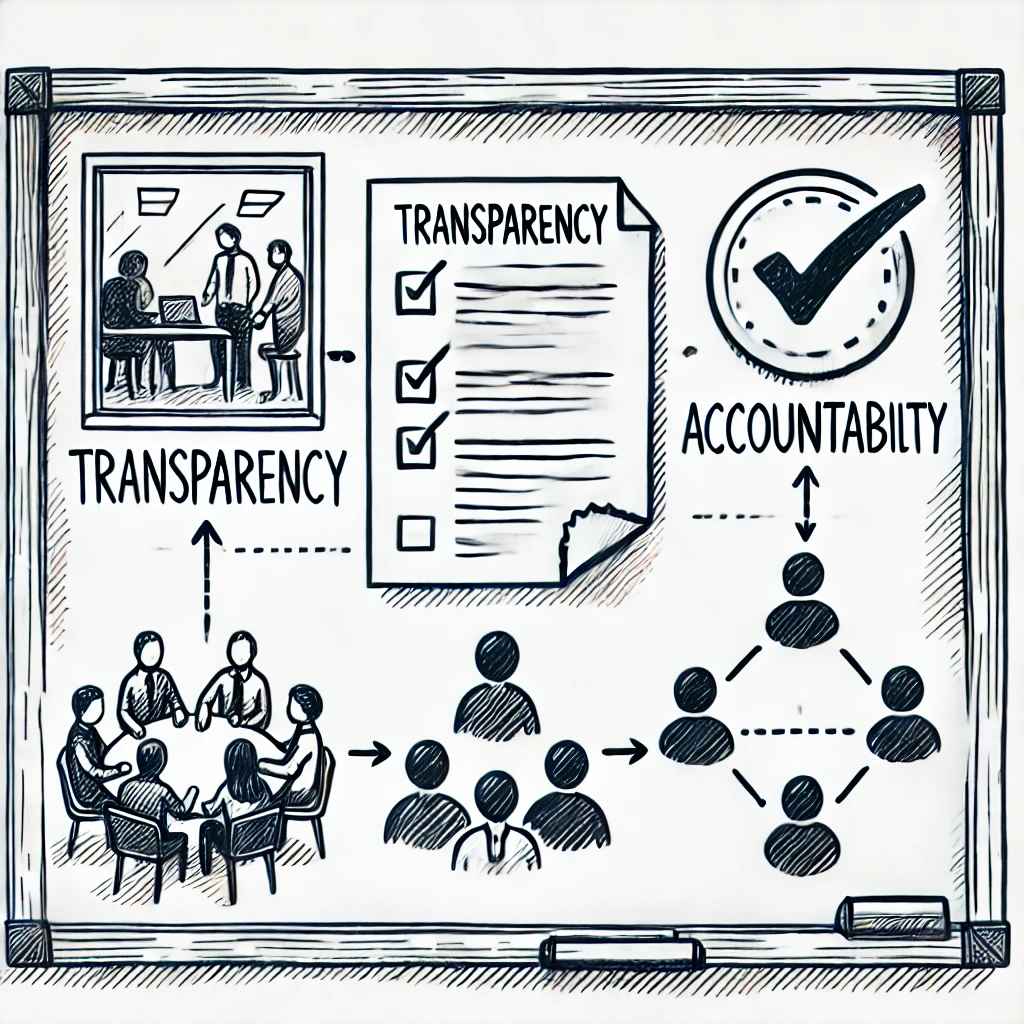It brings together all the elements of organization, optimized communication, and training to ensure seamless project management and stakeholder alignment.
Transparency & Acceptance
Do you feel you lack full visibility of all the elements of the project at any given time?
Are there any organizational challenges causing confusion or delays in your work?
Do you find reporting to be overly time-consuming or not results-focused?
Are stakeholders consistently aligned with the project goals and progress?
Is there a lack of clarity or support when learning new tools or procedures for the project?

If the stakeholders within your project are struggling to follow it, then
Unlock the transparency for seamless project management!
Effortless project alignment with top-notch organization, training, and communication
Transparency is the cornerstone of effective collaboration, combining organization, clear communication, and comprehensive training. It ensures everyone is aligned, informed, and empowered to contribute meaningfully to shared goals. By fostering trust and eliminating misunderstandings, transparency paves the way for seamless execution and lasting success.
Tools to make it happen.
Sustainable practices ensure that projects can be scaled or adapted as the organization grows.
Clear, concise, and timely reports provide actionable insights for better decision-making.
Valuable knowledge is preserved and shared, even during transitions or employee turnover.
Transparent tracking increases accountability among team and fosters stakeholder trust.
Clear data and other security measures and trust-building reduce operational risks and conflicts.
How it works.
The introduction of a global E-Privacy solution at a globally operating automobile manufacturer illustrates convincingly how our BOOST model provides structure for complex projects and leads them to success.
Transparency & Acceptance
- Reporting & KPIs: We developed a “slide factory” that visualized project progress, risks, and rollout status using an easy-to-understand traffic-light system. This allowed both management and each department to see at a glance where the project stood.
- Obligation to Provide Evidence to Authorities: Through meticulous documentation of each rollout step and the associated risk analysis, we guaranteed that in the event of a data protection authority audit, we could demonstrate the care and diligence with which the project was carried out.
- Building Trust: Clear, ongoing communication of all successes, challenges, and decisions fostered broad acceptance, ranging from the executive board to the operational teams.
FAQ – Transparency & Acceptance
What outcomes can we expect once this phase is well-implemented?
- All stakeholders (from executives to operational staff) have visibility into project status, decision points, risks; fewer surprises.
- Higher accountability: with clearer tracking and reporting, teams know what’s expected and where responsibility lies.
- Stronger stakeholder acceptance: because people feel included, informed, and see evidence of progress & care (for example in documentation). Trust improves.
Which tools or practices do you use to build transparency and stakeholder acceptance?
- Efficient reporting & KPIs: e.g. visual dashboards or “slide factories” showing project progress, risk, rollout status using intuitive indicators (like traffic-light systems).
- Knowledge transfer: preserving institutional knowledge, sharing it so transitions/turnover don’t cause loss of important info.
- Clear, ongoing communication of successes, challenges, decisions — from leadership to operational teams — to build trust.
How does this phase relate to previous phases like communication or training?
Transparency & Acceptance is the culmination of earlier phases. It depends on having organized structures, optimized communication, and effective training in place. Only when those foundations exist can transparency be sustained, accepted, and trusted.